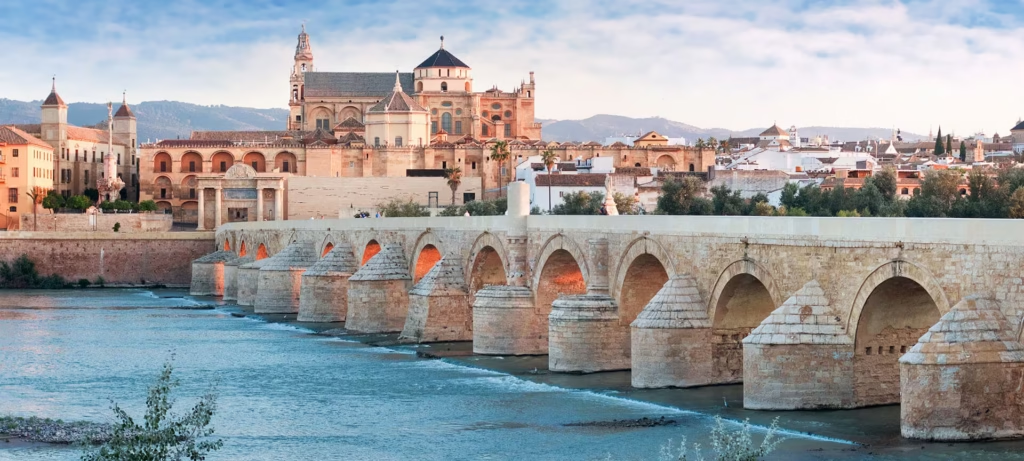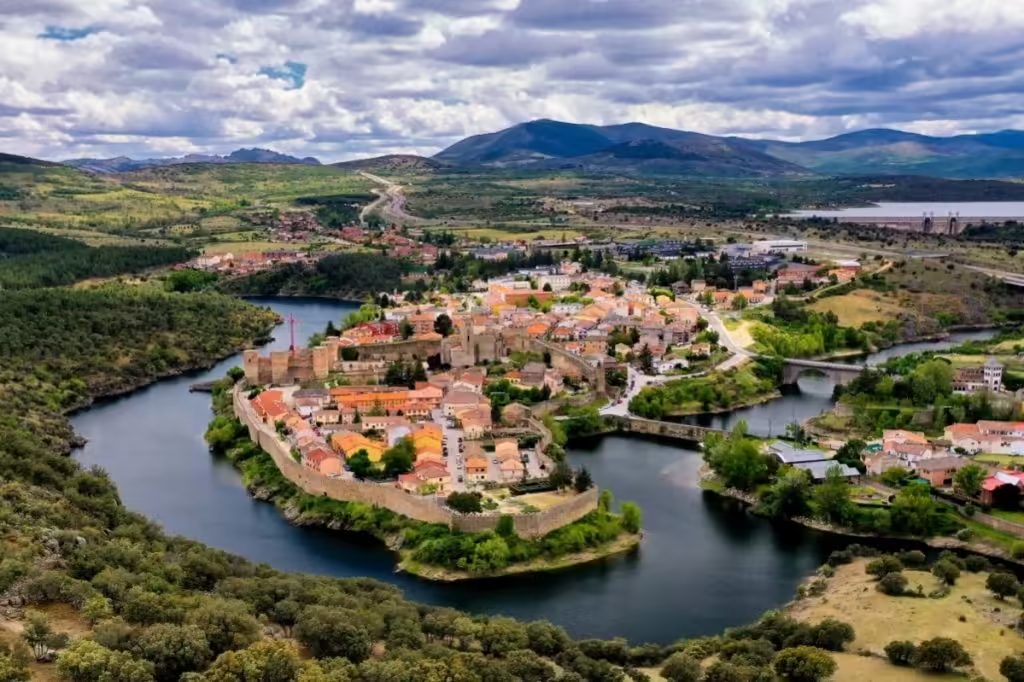Córdoba, located in southern Spain’s Andalusia region, is a city steeped in history and culture. Once the capital of the Islamic Caliphate, it boasts a unique blend of Moorish, Roman, and Christian influences. With its breathtaking Mezquita-Catedral, charming Jewish Quarter, and stunning patios, Córdoba is a must-visit destination for history lovers and cultural explorers alike.

Top Attractions in Córdoba
Mezquita-Catedral de Córdoba
The Mezquita-Catedral (Mosque-Cathedral) is Córdoba’s most iconic landmark. Built in 784 AD, it was once one of the largest mosques in the world before being converted into a cathedral in 1236. The interior features a mesmerizing forest of red-and-white arches, intricate Islamic calligraphy, and a Renaissance-style cathedral nave.
Highlights:
The Mihrab, an ornate prayer niche with stunning golden mosaics.
The Bell Tower, offering panoramic views of the city.
The Courtyard of the Orange Trees, a peaceful garden with fountains.
Alcázar de los Reyes Cristianos
The Alcázar of the Christian Monarchs is a fortress-palace built in 1328. It served as a royal residence for Catholic Monarchs Ferdinand and Isabella and later as a prison.
What to See:
The Moorish gardens, featuring reflecting pools and fountains.
The Tower of the Lions, offering great views of the city.
The Roman mosaics and Arab baths preserved inside.
Roman Bridge & Calahorra Tower
Originally built in the 1st century BC, the Roman Bridge crosses the Guadalquivir River and offers one of the most photogenic views of Córdoba. At the far end of the bridge, the Calahorra Tower houses the Museum of Al-Andalus Life, which showcases the coexistence of Muslims, Jews, and Christians in medieval Córdoba.
Jewish Quarter (La Judería)
Wander through the Jewish Quarter (La Judería), a labyrinth of narrow, whitewashed streets adorned with flowers. Here, you’ll find the Córdoba Synagogue, one of only three remaining medieval synagogues in Spain, dating back to 1315.
Cultural Experiences
The Patios of Córdoba
Córdoba is famous for its beautiful patios (courtyards), which locals decorate with colorful flowers and fountains. Every May, the Patios Festival (Fiesta de los Patios) opens these private patios to the public in a spectacular floral display.
Flamenco in Córdoba
Experience authentic Andalusian flamenco at one of Córdoba’s intimate tablaos. Popular venues include Tablao El Cardenal and Arte y Sabores de Córdoba.
Gastronomy: What to Eat in Córdoba
Córdoba’s cuisine reflects its Moorish and Andalusian heritage. Must-try dishes include:
Salmorejo – A thicker, creamier version of gazpacho, made with tomatoes, garlic, and bread, topped with jamón ibérico and hard-boiled egg.
Flamenquín – A deep-fried roll of jamón serrano wrapped in pork loin.
Rabo de Toro – A slow-cooked oxtail stew.
Pastel Cordobés – A puff pastry filled with almonds and pumpkin sweet filling.
For an authentic dining experience, visit Bodegas Campos or Taberna Salinas.
Accommodation Options
Córdoba offers accommodations ranging from luxury hotels to budget-friendly hostels:
Luxury: Hotel Hospes Palacio del Bailío, a 5-star hotel in a historic palace with Roman ruins.
Mid-Range: Las Casas de la Judería, a boutique hotel with stunning courtyards.
Budget: Hostal La Fuente, a charming, affordable stay near the city center.
Travel Tips
Best Time to Visit
The best time to visit Córdoba is in spring (April–June) and fall (September–October). May is particularly special due to the Patios Festival and the Cruz de Mayo celebrations. Summers can be extremely hot, with temperatures exceeding 40°C (104°F).
How to Get to Córdoba
From Madrid: Take the AVE high-speed train (1 hour 40 minutes).
From Seville: The train ride takes only 40 minutes.
By car: A scenic 1 hour 30-minute drive from Seville via the A-4 highway.
Getting Around Córdoba
Walking is the best way to explore the historic center.
Public buses are available for longer distances.
Bike rentals are a great option for eco-friendly travel.
Money and Costs
Currency: Euro (€)
Average meal cost: €15–25 per person
Attraction fees: Mezquita (€11), Alcázar (€5), Roman Bridge (free)
Tipping: Not required but appreciated for good service.
Frequently Asked Questions (FAQ)
1. How much time do I need to explore Córdoba?
A day trip is enough to visit the Mezquita, Alcázar, and Roman Bridge. However, a two-day stay allows for a deeper cultural experience.
2. Is Córdoba safe for tourists?
Yes, Córdoba is very safe, with low crime rates. Normal precautions should be taken in crowded tourist areas.
3. What should I wear in Córdoba?
Spring/Fall: Light layers and comfortable shoes.
Summer: Light, breathable clothing, a hat, and sunscreen.
Winter: A light jacket or sweater for cooler evenings.
4. Can I visit Córdoba on a budget?
Yes! The Roman Bridge and Jewish Quarter are free to explore, and many restaurants offer affordable menu del día (set lunch menus for €10–15).
5. What are the best photo spots in Córdoba?
Mezquita’s arches – Best captured early in the morning.
Roman Bridge at sunset – Stunning reflections on the river.
Patios of Córdoba – Visit in May for the most colorful displays.
Final Thoughts
Córdoba is a city where history, culture, and beauty blend harmoniously. From the majestic Mezquita-Catedral to the charming Jewish Quarter, this Andalusian gem offers an unforgettable experience. Whether you’re visiting for a day trip or a longer stay, Córdoba is sure to leave a lasting impression. Start planning your trip today!

